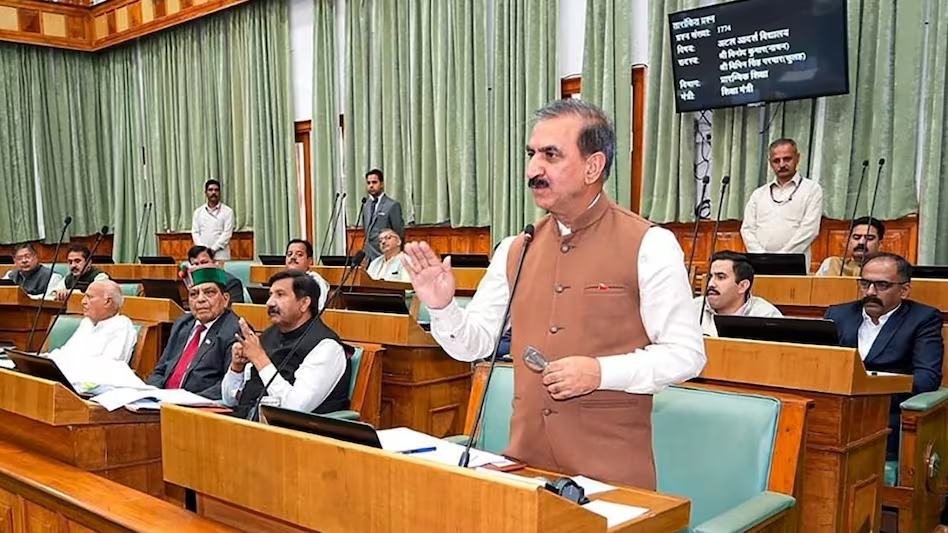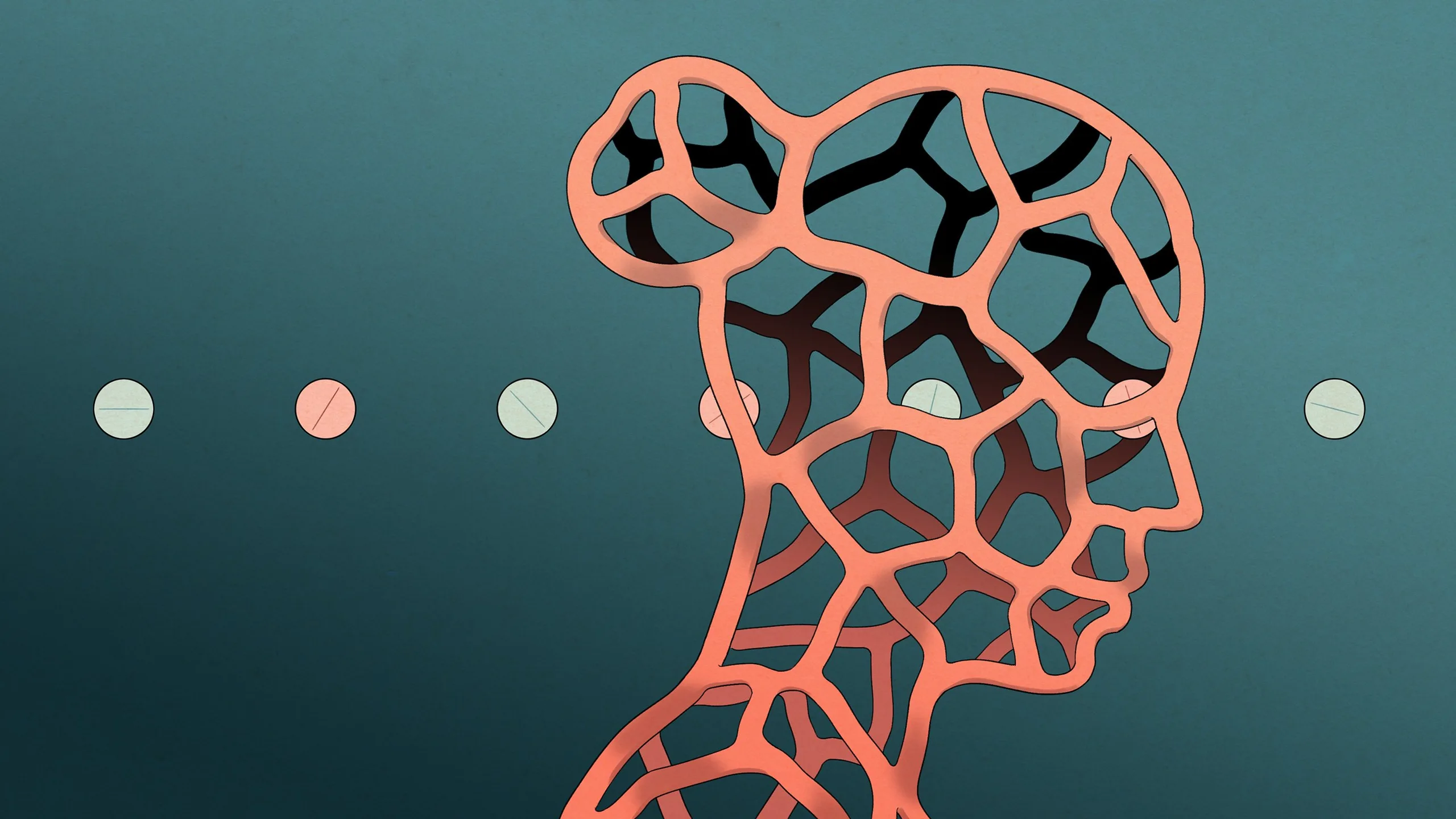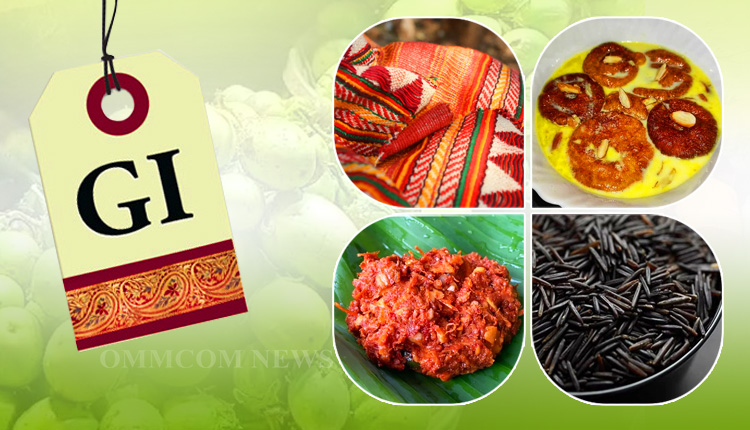- Courses
- GS Full Course 1 Year
- GS Full Course 2 Year
- GS Full Course 3 Year
- GS Full Course Till Selection
- Answer Alpha: Mains 2025 Mentorship
- MEP (Mains Enrichment Programme) Data, Facts
- Essay Target – 150+ Marks
- Online Program
- GS Recorded Course
- Polity
- Geography
- Economy
- Ancient, Medieval and Art & Culture AMAC
- Modern India, Post Independence & World History
- Environment
- Governance
- Science & Technology
- International Relations and Internal Security
- Disaster Management
- Ethics
- NCERT Current Affairs
- Indian Society and Social Issue
- NCERT- Science and Technology
- NCERT - Geography
- NCERT - Ancient History
- NCERT- World History
- NCERT Modern History
- CSAT
- 5 LAYERED ARJUNA Mentorship
- Public Administration Optional
- ABOUT US
- OUR TOPPERS
- TEST SERIES
- FREE STUDY MATERIAL
- VIDEOS
- CONTACT US
India World’s 3rd Largest Producer And Consumer Of Ethanol
India World’s 3rd Largest Producer And Consumer Of Ethanol
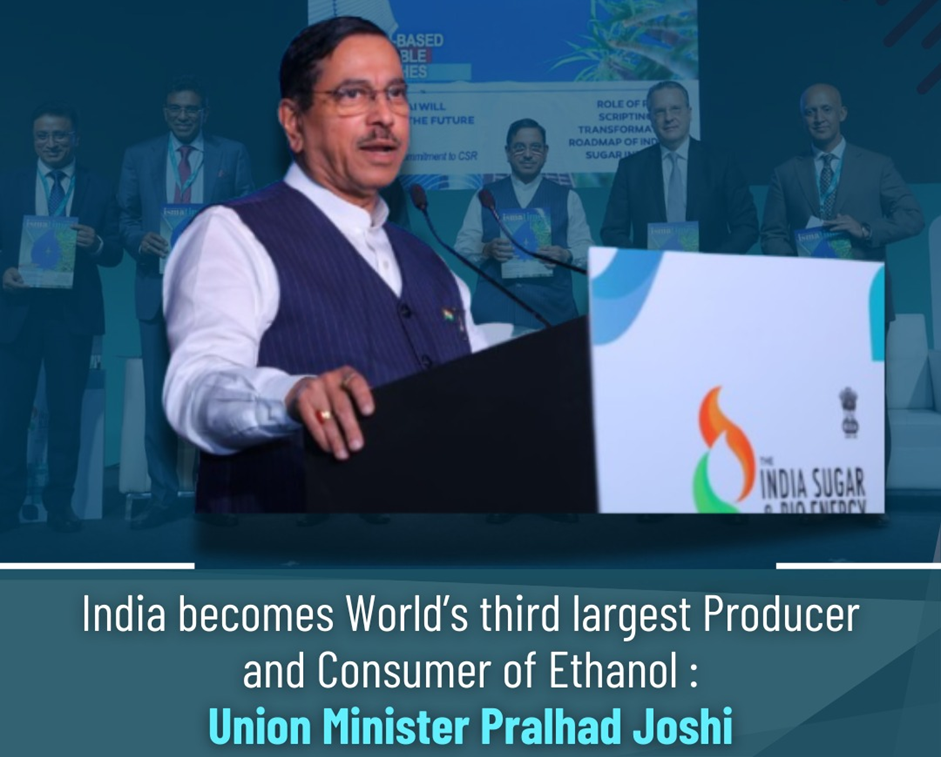
On September 26, 2024, Shri Pralhad Joshi, Union Minister for Consumer Affairs, Food and Public Distribution, and New & Renewable Energy, addressed the India Sugar & Bio Energy Conference. His remarks highlighted India's achievements in ethanol production and the importance of sustainable practices in the sugar and bioenergy sectors.
Key Highlights from the Conference
1. India's Position in Ethanol Production
- India is now the 3rd largest producer and consumer of ethanol globally. This achievement is attributed to strategic policy changes made by the Indian government.
- The Ethanol Blended Petrol (EBP) program is a significant initiative aimed at increasing ethanol production. Under the leadership of Prime Minister Narendra Modi, efforts have been made to expand production capabilities, which has resulted in higher revenues for sugar mills and reduced greenhouse gas emissions.
2. Economic Benefits of Ethanol
- Over the past decade, sugar mills have benefited financially from ethanol sales, leading to the establishment of new distilleries in rural areas. This growth has generated both direct and indirect employment opportunities.
- The increase in ethanol production aligns with India's goal to promote renewable energy and enhance economic resilience in the agricultural sector.
3. Commitment to Farmer-Centric Policies
- The Minister emphasized the need for the sugar industry to adopt farmer-centric policies to maintain global competitiveness. He noted that:
- The area under sugarcane cultivation has increased by 18%.
- Sugarcane production has grown by 40% in the last decade.
- The introduction of the Minimum Selling Price (MSP) for sugar in 2018 has helped protect farmers' interests, leading to nearly 99% of cane dues being cleared, amounting to around Rs. 1.14 lakh crores.
4. Farmers as Energy Producers
- Minister articulated a transformative vision for farmers, stating they are evolving from being "Anna Dattas" (food providers) to "Urja Dattas" (energy providers). This change reflects their growing role in the renewable energy sector, which is essential for achieving India's net-zero emissions target by 2070.
- The synergy between agriculture and green energy is seen as vital for building a sustainable future.
5. Global Collaboration Opportunities
- India, as the 2nd largest producer of sugarcane after Brazil, is poised for collaboration with Brazil in biofuels such as ethanol, biodiesel, and biojet fuel.
- The Minister pointed out significant opportunities in the bioenergy sector, including 2G and 3G ethanol, green hydrogen, and bioplastics. He stressed the importance of:
- Technology exchange and joint R&D to attract investments in biofuels and flex-fuel technology.
- Engaging with the Global Biofuels Alliance for broader cooperation.
6. Promoting Indian Agriculture Globally
- India is recognized as a Global Food Basket, and efforts are underway to promote Indian food products globally under the Bharat Brand.
- Sustainable packaging practices are encouraged to enhance the appeal of Indian agricultural products in international markets.
7. Future Outlook for Sugar Production
- Secretary of the Department of Food and Public Distribution, commented on the favorable monsoon and expected good crop yields for the 2024-2025 sugar season. He noted that government interventions have stabilized sugar prices, benefitting consumers.
What is Ethanol?
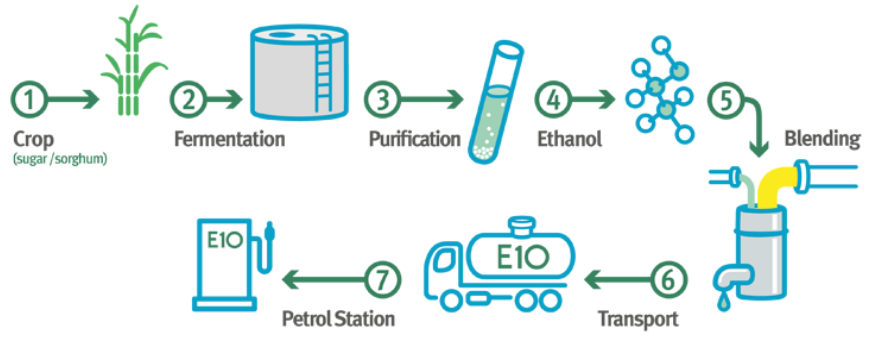
Ethanol is primarily produced from sugarcane molasses but can also be derived from other agricultural by-products like rice husk and maize. It is a clear, colorless liquid with a distinctive odor and taste.
Renewable Fuel:
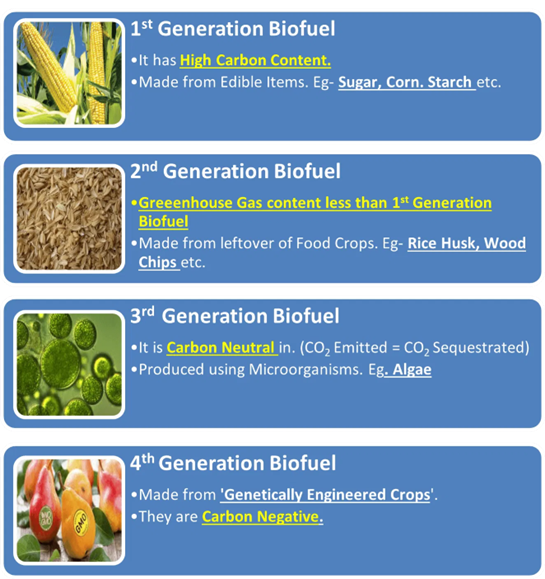
- Ethanol is considered a renewable fuel as it is produced from plants, which utilize solar energy for growth.
What is Ethanol Blended Petrol Programme?
- The Ethanol Blending Programme was launched by the Indian government in 2003 and has since been implemented in various phases to promote ethanol-blended petrol as an alternative to conventional petrol.
- Under this programme, a certain percentage of ethanol is blended with petrol to reduce the consumption of fossil fuels and curb carbon emissions.
- According to the National Policy of Biofuels-2018, India plans to blend 20% ethanol into petrol and 5% biodiesel into diesel by 2030
- However, in 2022, encouraged by the rapid progress of its ethanol programme,The Government has set a target of 20% blending of ethanol in petrol under the EBP programme by Ethanol Supply Year (ESY) 2025-26.
- In September 2023, India, the US, the United Arab Emirates, and Brazil launched the Global Biofuel Alliance.
- The countries agreed to provide financial and technical support to national programmes to promote the sustainable production and use of biofuels.
Ethanol Blended Petrol Programme?
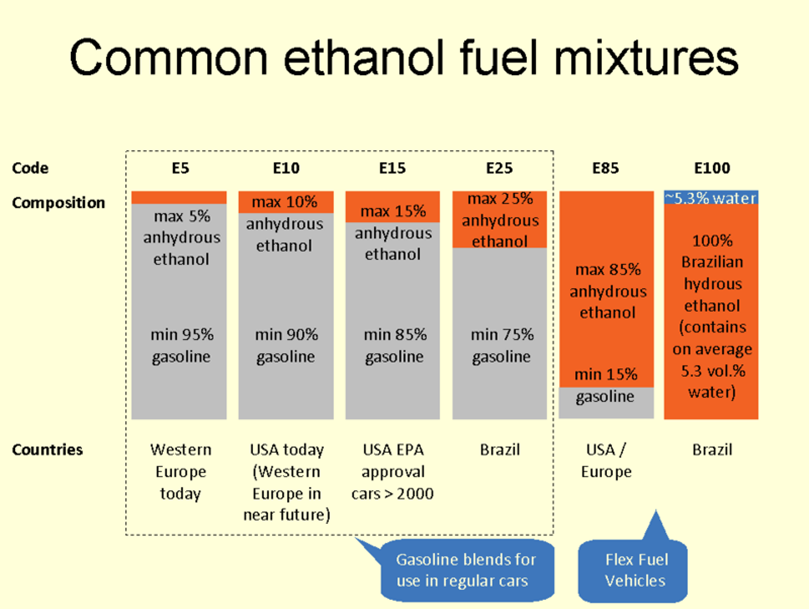
- Ethanol blended with petrol to reduce fossil fuel usage and support agriculture.
- Ethanol blending program increased from E5 to E10 and aims for E20 by 2025.
- Government incentives include subsidies for ethanol production and tax exemptions for equipment.
- Ethanol blending program implemented in different phases and is nationwide by 2021.
- Ethanol can be blended with gasoline in varying concentrations, commonly E10.
- Higher ethanol concentrations, such as E15 and E85, are also available in some regions.
- E10 is the US's most common blend of gasoline and ethanol.
- Higher blends of ethanol require specially designed or flex-fuel vehicles.
Recent Developments : ETHANOL 100 FuelIn March 2024, the Union Minister of Petroleum & Natural Gas and Housing & Urban Affairs launched 'Ethanol 100', a revolutionary automotive fuel at IndianOil retail outlets. What is ETHANOL 100 Fuel ?
|
Advantages of Ethanol Blending
- Renewable from plants, reducing greenhouse gas emissions.
- Improves engine performance, supports rural economies, and stabilizes prices.
- Reduces dependence on foreign oil, improves air quality, and offers flexibility.
- Advanced biofuels from non-edible plant parts, safer than gasoline.
Challenges Related to Ethanol Blending:
There are some problems in the use of ethanol that need to be solved.
- One problem is that the pipes and tanks used to store and distribute gasoline may not work well with ethanol. They may need to be replaced.
- Another problem is that there is not always enough corn or sugarcane, which is used to make ethanol.
- This means that obtaining enough ethanol can be difficult and the price can fluctuate significantly.
- Furthermore, ethanol does not provide as much energy as gasoline.
- This means that cars may need to be filled more often, and some cars may not work well with ethanol.
- This may mean spending more money on repairing cars.
- Ultimately, making ethanol can use a lot of water and land, which can be harmful to the environment.
Fermentation Process:
Fermentation is the metabolic process where yeast converts sugar into alcohol and carbon dioxide. This process is fundamental in producing alcoholic beverages such as wine, beer, and cider.
Conclusion
The India Sugar & Bio Energy Conference highlighted the significant strides made in ethanol production, emphasizing its role in boosting the sugar industry's profitability and aligning with renewable energy goals. By fostering collaboration and innovation, India aims to position itself as a leader in the global bioenergy sector while ensuring the sustainability of its agricultural practices. The focus on farmer empowerment and energy transition signifies a holistic approach to economic growth and environmental responsibility.
Must Check: Best IAS Coaching In Delhi
UPSC Prelims Result 2024 Out: Expected Cut Off & Other Details, UPSC Prelims 2024 Answer with Explanation, Daily Prelims Quiz, Daily Current Affairs, MONTHLY CURRENT AFFAIRS TOTAL (CAT) MAGAZINE, Best IAS Coaching Institute in Karol Bagh, Best IAS Coaching Institute in Delhi, Daily Mains Question Answer Practice, ENSURE IAS UPSC Toppers, UPSC Toppers Marksheet, Previous Year Interview Questions, UPSC Syllabus


